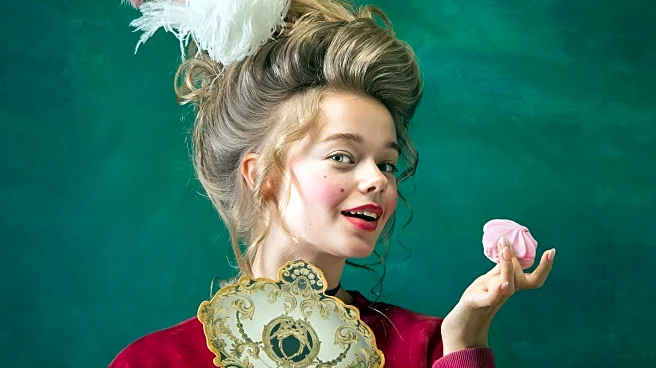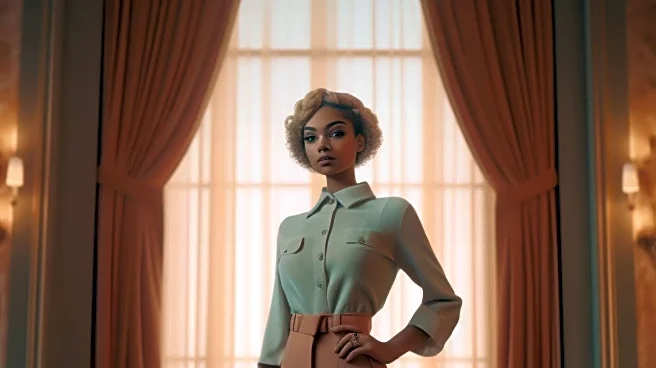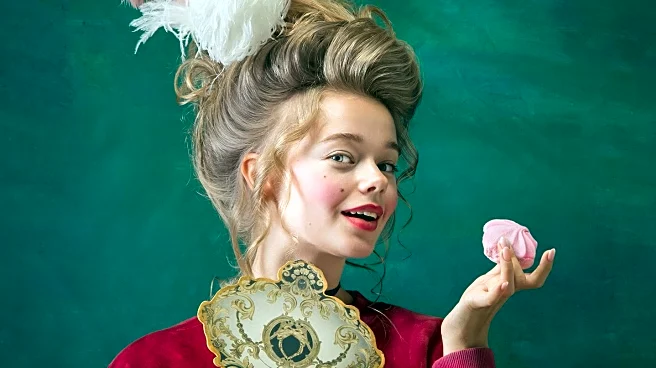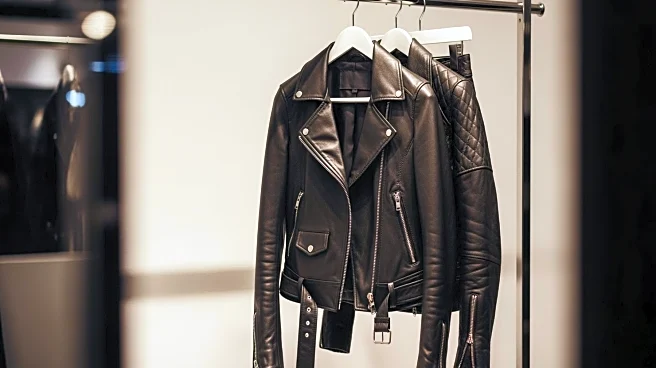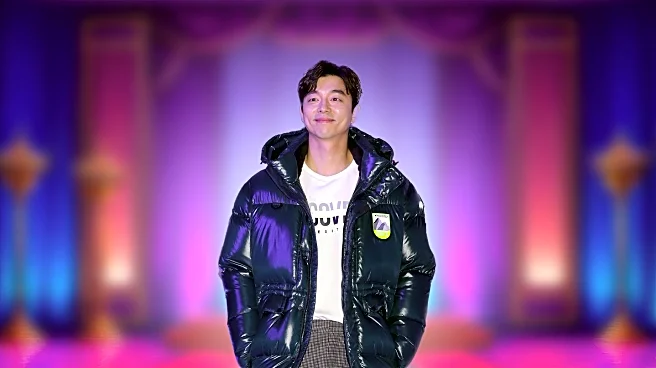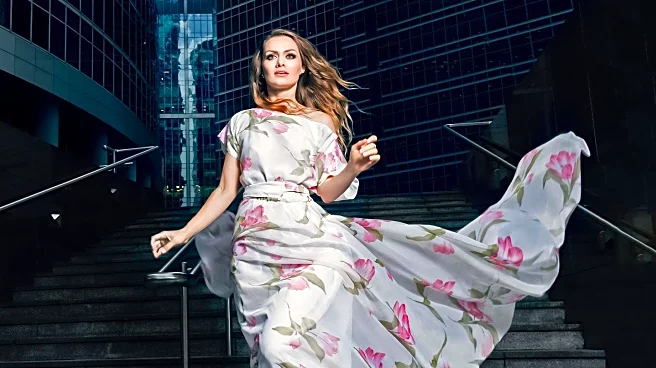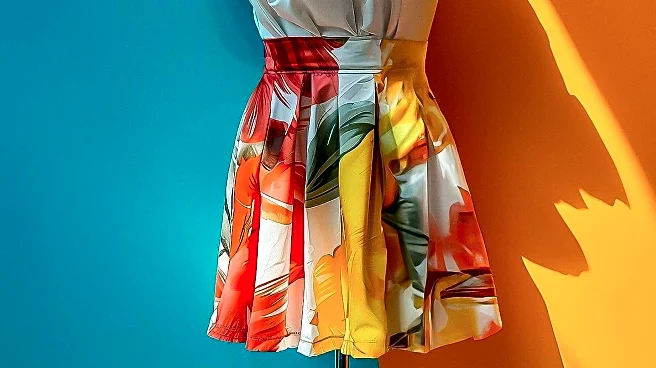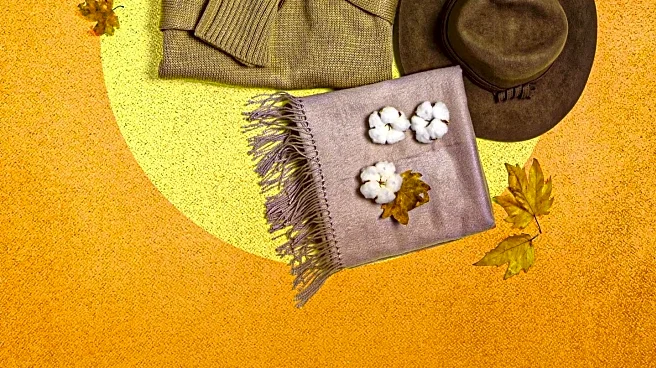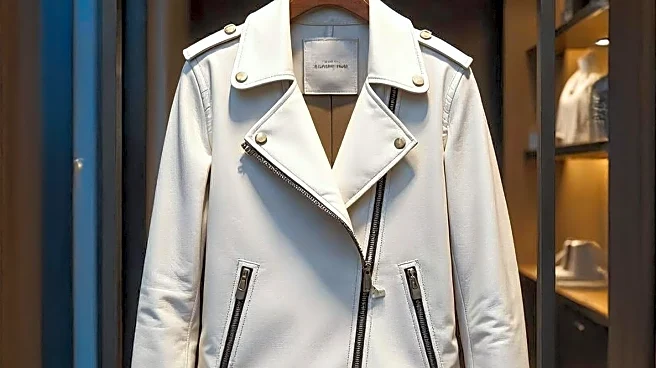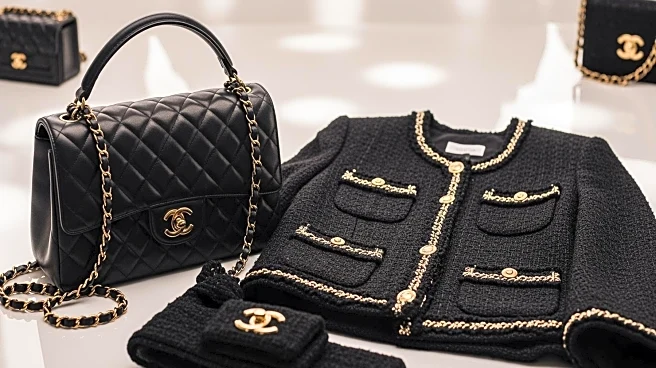What's Happening?
Fashion designers are drawing inspiration from the 18th century, focusing on voluminous and dramatic designs that emphasize shape and structure. This trend is evident in sweeping ball dresses, mini versions
with dramatic flares, and tea-length gowns that cinch at the waist before expanding into full-bodied shapes. The revival of this style is seen on runways and in high fashion stores, where designers are modernizing the look to make it more wearable and less costume-like. The trend celebrates curves and aims to create statement-making silhouettes using materials like silk, tulle, and structured cotton.
Why It's Important?
The resurgence of 18th-century fashion styles reflects a broader trend in the fashion industry towards embracing historical influences while adapting them for contemporary tastes. This movement could impact consumer preferences, encouraging a shift towards more dramatic and structured clothing. It also highlights the industry's ability to innovate by blending past and present styles, potentially influencing future fashion collections and retail strategies. Designers and retailers who successfully capitalize on this trend may see increased demand and sales, as consumers seek unique and bold fashion statements.
What's Next?
As this trend gains traction, fashion designers and retailers may continue to explore historical influences, potentially leading to further revivals of past styles. The industry might see collaborations between designers and historians to ensure authenticity while maintaining modern appeal. Additionally, fashion shows and marketing campaigns could increasingly feature these dramatic styles, aiming to attract consumers interested in distinctive and bold fashion choices. Retailers may also adjust their inventory to include more pieces that align with this trend, anticipating consumer demand.
Beyond the Headlines
The revival of 18th-century fashion styles may also spark discussions about cultural appropriation and the ethical implications of drawing from historical periods. Designers might face scrutiny over how they interpret and modernize these styles, particularly regarding the representation of historical garments. This trend could lead to a deeper exploration of fashion history, encouraging consumers and designers alike to appreciate the cultural significance of past styles while considering their modern adaptations.
